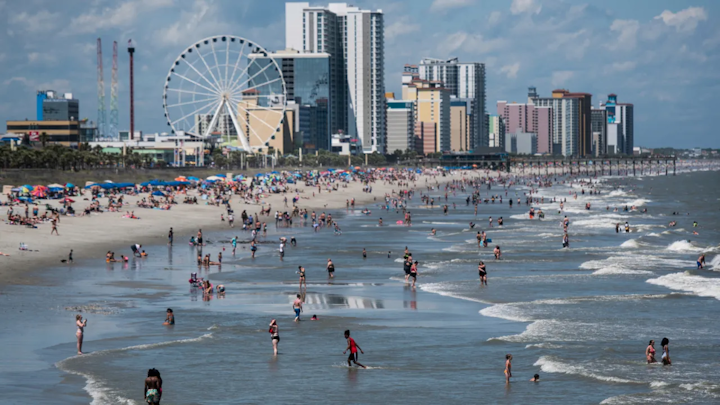How is plastic made
It must be said that the production of plastic is a complex process. In refineries, oil, coal or natural gas are first heated to a very high temperature before being suddenly cooled in order to extract usable molecules. This is the cracking stage.
Molecules join together to form polymers that form the basis of all plastics. These generally come in the form of granules, liquids or powders and will then be shaped by molding and the addition of additives in particular. It is here that the material will, for example, become more resistant to shocks and can take on a multitude of colors.
In the end, there are three main types of plastics
- Thermoplastics which deform under the action of heat and which are found in furniture, packaging or toys in particular. They now represent around 80% of the plastics consumed in Europe.
- Thermosetting plastics that burn at too high a temperature and are found in the foams of mattresses, car seats or ski boots.
- Finally, elastomers, with properties similar to those of rubber, which are used to manufacture tires or shoe soles.
In general, plastics have become ubiquitous in our daily lives thanks to their lightness, resistance and ease of use. Yes, but the processing steps are both long and complex and require considerable amounts of water and energy to make the smallest plastic bag that will end up in the trash after only about twenty minutes of use.
The causes of plastic pollution
Because unlike most other materials such as steel, whose lifespan is estimated at several decades, plastic is not made to last, at least not in our households.
The catastrophic management of our waste
Half of the plastic produced in the world becomes waste in less than a year. In addition, once thrown away, several hundred years of pollution are expected until the plastic has completely decomposed. 100 years for a lighter for example, 450 years for a plastic bag and up to 1000 years for a bottle of water.
Unfortunately, even at this stage, the plastic never completely disappears and its toxic residues resulting in particular from the additives added during its production seep into water and soil.
Despite everything, a million plastic bottles continue to be sold every minute in the world and the equivalent of 1,440 garbage trucks pour into the seas every day, most of them from urban areas far from the coast. In the Mediterranean Sea, between 1000 and 3000 tons of plastic are currently floating on the surface. Debris loaded by rivers or from tourist activity and dense maritime traffic and which today make the Mediterranean Sea the sixth largest area of accumulation of marine litter, after
the five ocean continents of plastic
And what is happening below the surface is even more disturbing.
Because the 300,000 tons of plastic waste currently floating on the surface of the oceans represent only 1% of the plastic present in the marine environment. The 99% sink to the deepest abysses or break down into micro-particles that will be ingested by the fauna and flora to gradually rise to our plates. Approximately one million birds and 100,000 marine mammals are killed each year in contact with our plastic waste.
At this rate, it is estimated that the oceans will contain more plastic than fish by 2050, a mass of around 750 million tons.
However, beyond the pollution generated by waste, we must not forget that the extraction, transport and processing of raw materials release carcinogenic elements into the atmosphere and are responsible for a total of 6% of global emissions. of greenhouse gases. Added to this are highly toxic additives that manufacturers may not mention on their products and accidents such as chemical releases, explosions or industrial fires, for example. In 2013, 73 accidents of this type were recorded in a polymer manufacturing plant in Louisiana, or about 6 per month.
The cost of renting a dumpster in Myrtle Beach, SC
In order to remove some of this plastic waste in bulk, some residents of South Carolina use dumpster rental services to discard their junk and sent it to the nearest recycling facility.
The cost of renting a dumpster in Myrtle Beach, SC, can fluctuate depending on various factors, including the size of the dumpster, the rental duration, the type of waste being disposed of, and the rental company you choose.
For a standard 10-yard dumpster, which is suitable for small cleanouts or DIY projects, you might expect to pay around $250 to $350 for a one-week rental. Larger dumpsters, such as 20 or 30 yards, designed for larger construction or renovation projects, typically cost between $350 and $600 or more for a week. Prices can vary, so it’s essential to obtain quotes from local rental companies for precise figures.
The type of waste you’re disposing of also influences the cost. Common household and construction debris usually incur lower disposal fees compared to hazardous or regulated materials, which might come with additional charges due to specific handling and disposal requirements.
It’s crucial to contact local rental companies directly to get accurate cost estimates for dumpster rentals in Myrtle Beach. They can provide tailored quotes to suit your specific project requirements, ensuring you have a clear understanding of the expenses involved in managing your waste responsibly. Additionally, they can assist in navigating any local regulations or permit requirements that may apply to your rental.
List of references
- https://scdhec.gov/environment/recycling-waste-reduction/where-recycle-locally
- https://www.cityofmyrtlebeach.com/departments/public_works_department/solid_waste_and_recycling_division.php
- https://myrtlebeachdumpsterrental.com/
- http://raleighhomesonline.com/the-technologies-of-waste-management/
- http://raleighhomesonline.com/greensboro-nc-junk-cleaning-with-a-dumpster-rental/

